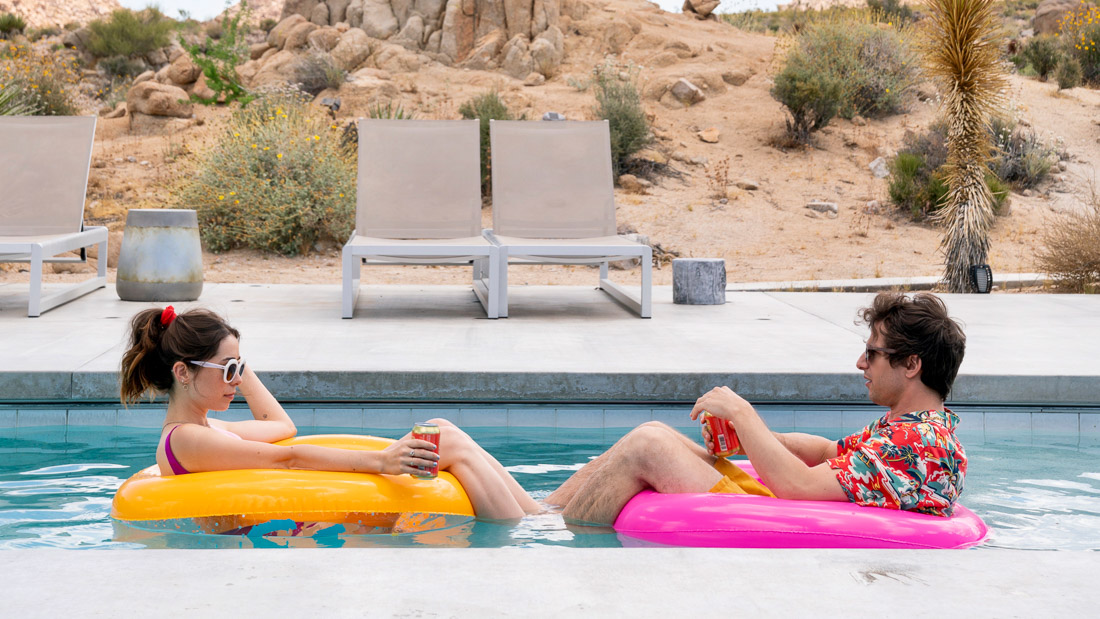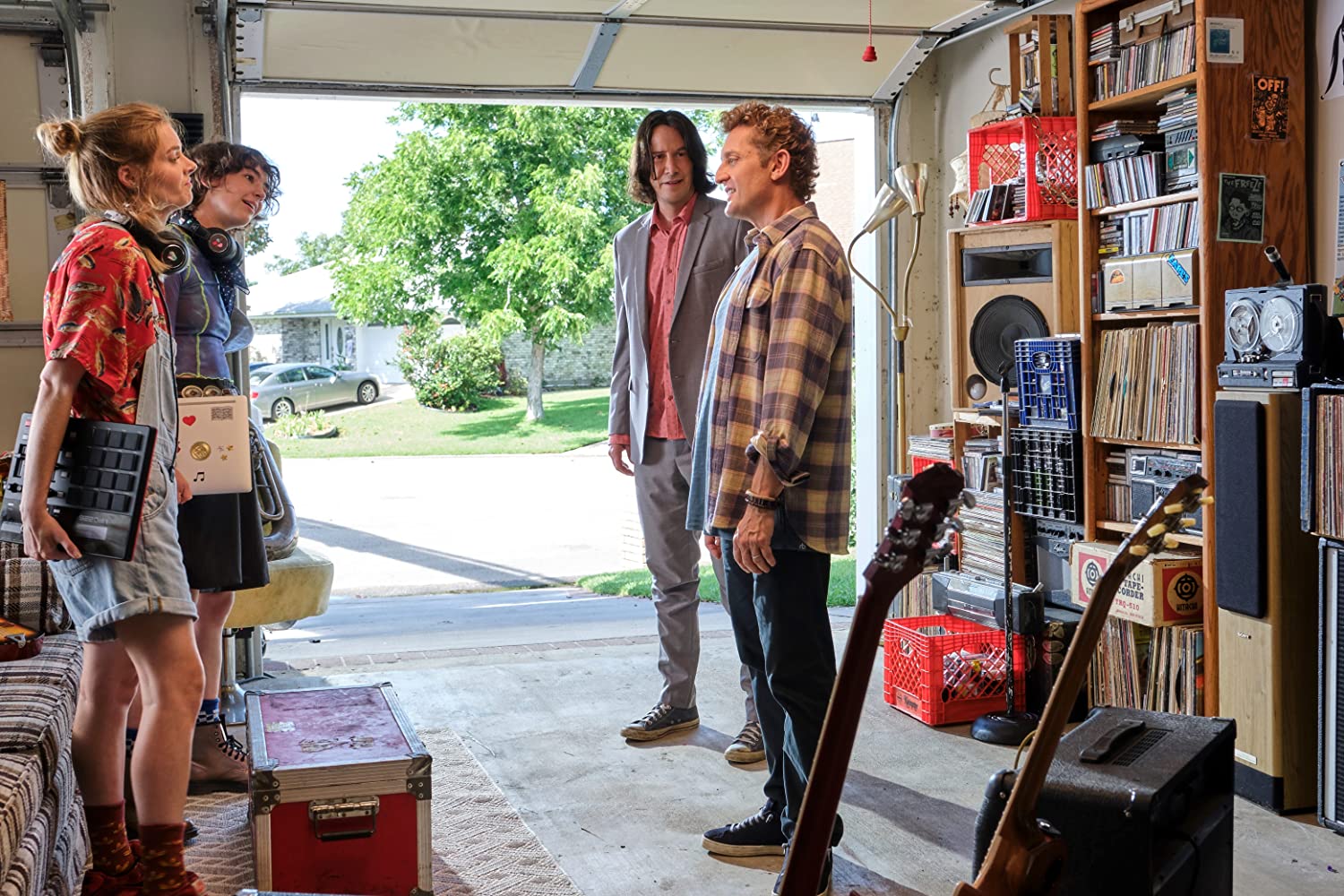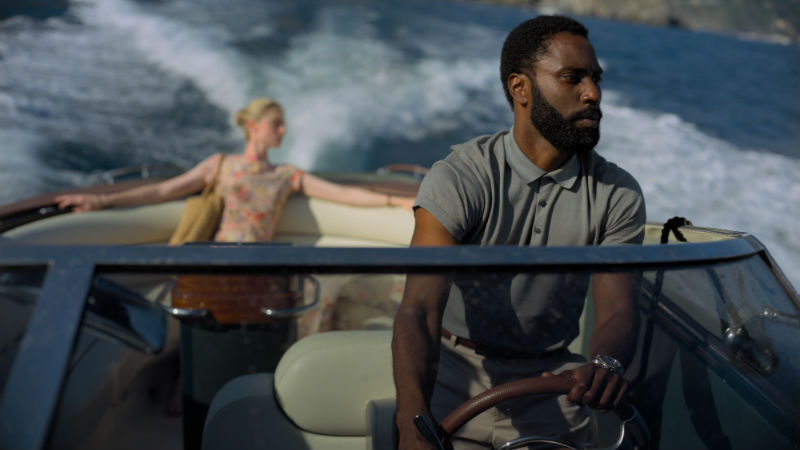Here’s how weird 2020 was for movies: Unless you saw something in January or February (like The Invisible Man, Birds of Prey, or Bloodshot), there’s a good chance you didn’t see a movie in a movie theatre for the entire year. A whole year without going to the movies. Frankly, it’s hard to even fathom, even though we lived it.
And yet the movies remained, thanks in large part to streaming services. No, they weren’t as hyped up. Sure, you talked about them over Zoom instead of over coffee, but 2020 had a good amount of good movies, unconventional as they may be. Here are our favourites, in no particular order.
[referenced id=”1654365″ url=”https://gizmodo.com.au/2020/12/the-best-sci-fi-fantasy-or-horror-movies-gizmodo-rewatched-in-2020/” thumb=”https://gizmodo.com.au/wp-content/uploads/2020/12/04/the-rocketeer-300×169.jpg” title=”The Best Sci-Fi, Fantasy, or Horror Movies Gizmodo Rewatched in 2020″ excerpt=”Twenty-twenty hasn’t been good for much, but it has been given us bountiful free time — time you hopefully used to finally make good on that statement “Oh, I’d love to watch that but I don’t have time.” Well, in 2020 you did. As a result, many of us revisited…”]
The Best:

Palm Springs
This could’ve easily been just another Groundhog Day — this time about a slacker (Andy Samberg) reliving a boring destination wedding in Palm Springs, only to find himself with a companion (Cristin Milioti) who refuses to resign herself to her time looped fate. But there were a lot of things that set this film apart. Samberg and Milioti, along with co-star J.K. Simmons, brought the perfect mix of heart, humour, and complexity to their roles. Combined with a tight 90-minute running time and a thoughtful script that refused to take the easy route, giving us some legitimately shocking moments and character reveals, Palm Springs was a day we were more than happy to relive over and over. — Beth Elderkin
The Invisible Man
Unlike Universal’s attempt at building a new Dark Universe with The Mummy reboot, Blumhouse’s The Invisible Man managed to take a classic horror monster and make it feel genuinely terrifying by 2020 standards. At the same time, it also introduced new elements of horror in the movie’s take on the titular villain. By making Cecelia’s perceived paranoia every bit the threat that Adrian and his invisibility suit were, The Invisible Man elevated the original film’s premise and showed us that there’s a way to make creature features like these truly sing with the right creative teams. — Charles Pulliam Moore
Possessor
Hitman movies are a dime a dozen at this point, but writer-director Brandon Cronenberg managed to find a whole new angle on the genre with Possessor’s blend of sci-fi, body horror, and psychological thriller. An assassin (Mandy’s Andrea Riseborough) has both the physical stamina and slippery morals required to excel in her field, which in this world involves mind-control technology that allows her to temporarily take over someone else’s body and use them to kill whoever she’s been hired to rub out. Trouble arises when her latest target starts resisting her presence in his brain. Set in a future that feels just within reach, Possessor’s high-concept premise works because the characters who drive its story have such forceful motivations. Riseborough’s performance as a woman who begins to spiral at the worst possible moment is particularly noteworthy, and Possessor makes it clear that Cronenberg does not need the qualifier “son of David” to add shine to his own talents. — Cheryl Eddy
His House
South Sudanese refugees Rial (Lovecraft Country’s Wunmi Mosaku) and Bol (Ṣọpẹ́ Dìrísù) have already endured incomprehensible horrors before they settle into their first home in London. But trouble follows close behind as they try to make a new start in Remi Weekes’ startling, timely His House. While this is a haunted-house story stuffed with ghostly frights (and Doctor Who’s Matt Smith), its terrors are elevated since they’re drawn directly from the experiences of its traumatised main characters. They are people both worn down by the very human concepts of survivor’s guilt and feeling displaced in a country that often feels exceedingly unwelcoming. — Cheryl Eddy

The Vast of Night
If Steven Spielberg was an Oklahoma kid who grew up in the ‘80s and ‘90s, he would have made The Vast of Night. Instead, it was made by first-time filmmaker Andrew Patterson, an Oklahoma native, who took a homegrown film school education and turned it into a smart, sumptuous take on the alien invasion drama. The film unfolds beautifully over a quiet night in 1950s New Mexico where a radio deejay (Jake Horowitz) and switchboard operator (Sierra McCormick) begin to hear mysterious noises coming from the sky. A larger mystery unravels as Patterson moves his camera with the confidence of a seasoned pro. The Vast of Night is an original sci-fi drama that somehow innovates while also being nostalgic. Mr. Spielberg would probably be impressed. — Germain Lussier
Birds of Prey (and the Fantabulous Emancipation of One Harley Quinn)
Considering how shit this year has been you’d be forgiven for forgetting Birds of Prey (and the Fantabulous Emancipation of One Harley Quinn) came out in 2020. For a lot of folks, it was the last film they were able to see in theatres. While the DC Comics anti-hero was already soaring high thanks to her new animated series, the Cathy Yan-directed, Christina Hodson-written film was firing on all cylinders. Margot Robbie, Mary Elizabeth Winstead, Jurnee Smollett-Bell, Rosie Perez, and Ella Jay Basco starred as the titular birds, brought together here by circumstances more than any particular cause but that just meant their efforts against Ewan McGregor’s Roman Sionis were that much more surprising for audiences. The colours, the music, the fights, the costumes, everything here added up to a superb and refreshing take on the genre. We can’t wait to see more. — Jill Pantozzi
Weathering With You
Makoto Shinkai’s sumptuous follow up to Your Name can’t quite escape the shadow of one of the biggest Japanese films of all time, but even so, it delivered a heartwarmingly earnest romantic fantasy about a young girl who can control the weather and the wanderlust-driven young boy who ventures to Tokyo only to fall head over heels for her. An intimate celebration of Tokyo’s vibrance and even its bleakness, Weathering With You’s warmth was a welcome light at the start of 2020 — even if it did feel like Shinkai chasing up on the themes he’d hit before in Your Name. — James Whitbrook
The Old Guard
In a year mostly devoid of big-budget, comic book action movies, the best of the bunch came from Netflix. Gina Prince Bythewood’s adaptation of Greg Rucka and Leandro Fernández’s Image comic followed a group of immortal warriors (lead by Charlize Theron) who put their lives on the line to right history. The Old Guard had all the adrenaline one could want from the comic book genre, along with layers upon layers of mythology and ideals. The result was an elevated comic book experience begging for more chapters. — Germain Lussier
[referenced id=”1522329″ url=”https://gizmodo.com.au/2020/10/lupin-iii-the-firsts-director-on-bringing-an-anime-icon-to-3d-and-having-him-fight-nazis/” thumb=”https://gizmodo.com.au/wp-content/uploads/2020/10/23/xsdtm9m64fxfth7c8mis-300×128.jpg” title=”Lupin III: The First’s Director on Bringing an Anime Icon to 3D (and Having Him Fight Nazis)” excerpt=”Lupin III: The First is finally coming to Western shores, giving fans outside of Japan the chance to officially see the beloved thief complete his greatest heist yet: stealing our hearts and minds as he takes the leap to sumptuous 3D animation. But it’s not the only major first that,…”]
Lupin III The First
Usually, the translation of a traditionally 2D-animated cartoon hero to the world of 3D is met with trepidation, a fear from fans that CG, for all its wonders, will never quite truly capture the aesthetic that defines these classic characters as it modernises their aesthetics. Lupin III: The First was more than happy to punt that fear right out of an open window though, delivering a visual spectacle that wasn’t just unlike anything Monkey Punch’s charming gentleman thief has ever dealt with before, but still retained the visual charm that’s made the manga and anime character a legend all over the world. The movie itself was a breezy, action pack epic that took Lupin’s sense of scale to a whole new sci-fi level that still packed the charm of his usual escapades. Plus, he got to beat up some Nazis. What’s not to love? — James Whitbrook
Relic
Months after its release, flashbacks to this claustrophobic creepfest are still making our skin crawl. A trio of women — grandmother Edna (Robyn Nevin), daughter Kay (Emily Mortimer), and granddaughter Sam (Bella Heathcote) — are drawn together when the eldest, who’s long displayed signs of dementia, goes missing from her rural cottage and then makes a sudden, strange return. Director and co-writer Natalie Erika James layers a misty, foreboding atmosphere around a tale that plays into the guilt Kay feels as she’s trying to manage her mother’s care, but also enfolds some secret family history that evokes dark fairy-tale themes and eventually, thrillingly, goes full creature horror. — Cheryl Eddy

Bill & Ted Face the Music
Like so many reboots, remakes, revamps, there was no need for more Bill S. Preston, Esq. or Ted Theodore Logan but, as it turns out, Bill & Ted Face the Music was the perfect anecdote for 2020. Originally set to be released in theatres (like so many other films this year), Dean Parisot, Chris Matheson, and Ed Solomon’s creation was granted a streaming release like a giant gift to the world. The third and final film in the series brought back Alex Winter and Keanu Reeves (and even William Sadler) as the real-world aged versions of their classic teenage characters, who now had teenagers of their own (the new additions of Samara Weaving and Brigette Lundy-Paine). The problem? Their band, the Wyld Stallyns, still hadn’t written the song that would unite the world. The solution? An adorable romp through time meeting several different versions of themselves, some unusual guest-stars, a trip to a most unusual version of hell, and the realisation that maybe, just maybe, not everything is about them. — Jill Pantozzi
Wolfwalkers
Wolfwalkers isn’t just a movie, it’s an experience. The Miyazaki-esque animated film, set during Britain’s colonisation of Ireland, tells the story of a hunter’s daughter named Robin who befriends a young shapeshifter. While that unfolds, Robin’s people — led by the villainous Lord Protector Oliver Cromwell — seek to cut down the woods and kill all the wolves who reside in it. The animation alone is a sight to behold, with gorgeous craftsmanship that’s oftentimes purposefully unfinished. I was particularly impressed with how Wolfwalkers used shape, colour, and linework, with the town coming across as sharp and cold while the woods were full of curves and comfort. But the movie also contained important messages about colonialism, systemic oppression, and the ongoing battle between nature and industry. — Beth Elderkin
[referenced id=”1657835″ url=”https://gizmodo.com.au/2020/12/the-best-blockbusters-movies-of-2020-in-a-parallel-universe/” thumb=”https://gizmodo.com.au/wp-content/uploads/2020/12/14/venom-best-movie-2020-300×175.jpg” title=”The Best Blockbusters Movies of 2020 (in a Parallel Universe)” excerpt=”Something strange is afoot on Gizmodo.”]
The Worst:

Tenet
No, your eyes do not deceive you. You’re reading the right part of the list. Christopher Nolan’s Tenet is just…bad. It’s ambitious for sure. Technically magnificent. Filled with potential. None of which matters a lick if the story doesn’t make any sense and the characters are paper-thin. There’s just nothing, or no one, to care about in the movie. Add to that a confusing plot you literally need to turn subtitles on to understand and, well, all the cool visual effects in the world won’t save you. — Germain Lussier
The Craft: Legacy
There are a lot of things, on paper at least, to like about The Craft: Legacy. It continues the story of the 1996 teen-witch melodrama from the point of view of a female writer-director (Zoe Lister-Jones) who is intent on telling a feminist, socially conscious, inclusive story. A high-school movie from the 1990s would never, for instance, have a trans character (played by trans actress Zoey Luna) who’s just nonchalantly part of the core friend group the way Legacy does. But despite those praiseworthy progressive elements, Legacy still managed to feel like a pretty dull follow-up to a movie that’s earned a cult following mostly because it’s so outrageous and over the top. The magic stuff lacked much wonder or terror, and the sinister intentions of the villain (a wasted David Duchovny) were obvious the moment he appeared onscreen. Worst of all, there was nothing here to match Fairuza Balk’s performance as Nancy Downs in the original, a fact Legacy only underlined when it shoehorned a Nancy cameo into its very last scene. — Cheryl Eddy
Artemis Fowl
Despite having otherworldly magicks and an entire universe-worth of excellent source material to draw from, Kenneth Branagh’s Artemis Fowl brought none of the original novels’ magic to Disney+ as one of the studio’s first major releases on the platform. Instead, what we got was an over-produced, half-baked take on a solid children’s book that, here, for some reason put too much of its focus on the power of militarised police forces. Artemis Fowl may have been an evil villain, but he deserved far better than Disney’s movie. — Charles Pulliam Moore
Bad Hair
If Justin Simien’s Bad Hair put as much time and effort into thinking through the optics and subtext of its plot as it did into its heavy-handed sendups of Black ‘80s culture, the movie might actually have been on the other spectrum of this list, because there was a lot of potential in play here. But in between its spoof music videos and purposefully cheesy lines, Bad Hair got caught up in a tangled mess of mixed metaphors, uneven performances, and a message that ultimately seemed to be making fun of the very same Black women it was meant to be celebrating. — Charles Pulliam Moore
[referenced id=”1659198″ url=”https://gizmodo.com.au/2020/12/the-pop-culture-highlights-and-lowlights-of-2020/” thumb=”https://gizmodo.com.au/wp-content/uploads/2020/12/18/fp88kijweah7l9r6lxoi-300×169.jpg” title=”The Pop Culture Highlights and Lowlights of 2020″ excerpt=”In a year full of all kinds of bad real-world news, pop culture still managed to poke its head up periodically to remind us that not everything sucks. Of course, this being 2020, that same realm also managed to leave a few steaming piles for us to step in, too….”]
Antebellum
There is a stark difference between mining the realities of the horrors Black people have suffered as a result of America’s legacy of anti-Black racism to tell powerful stories, and putting that same kind of hurt and pain on the screen simply so the visceral emotion of it can be mistaken for art. Gerard Bush and Christopher Renz’s Antebellum falls squarely within the latter category with its distasteful story that finds its Black protagonist spirited away from the present day to a plantation she believes is in the past where she witnesses all manners of grotesque horrors. With a premise as charged as Antebellum’s, one would think that the filmmakers truly had something of note to say justifying the intensity of its visuals as plot points. But Antebellum simply doesn’t, which is almost as offensive as anything the movie depicts. – Charles Pulliam Moore
Dolittle
To quote my review, “Robert Downey Jr. sticks his arms up a dragon’s arsehole.” Who could have known that would be the perfect precursor to 2020? — Germain Lussier
[referenced id=”1658619″ url=”https://gizmodo.com.au/2020/12/the-12-best-and-7-worst-television-shows-of-2020/” thumb=”https://gizmodo.com.au/wp-content/uploads/2020/12/10/ljmq2uvxwtq1vlqu6ggs-300×125.png” title=”The 12 Best (and 7 Worst) Television Shows of 2020″ excerpt=”We might have seen a shortage of new movies in 2020, but one thing we still got a lot of was television shows. This was a year of saying goodbye to many beloved series while introducing some new ones into the fold. Some sparked, others fizzled. Here are the TV…”]
Editor’s Note: Release dates within this article are based in the U.S., but will be updated with local Australian dates as soon as we know more.
